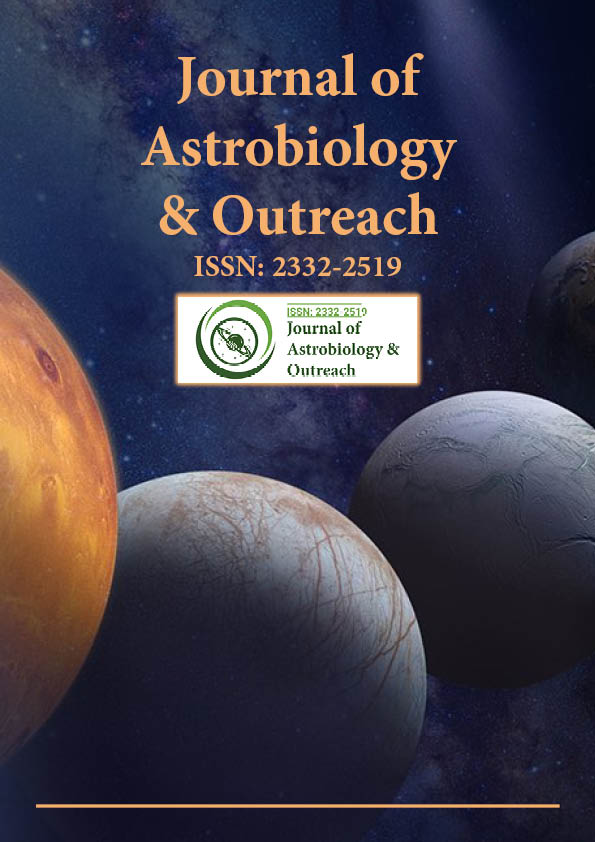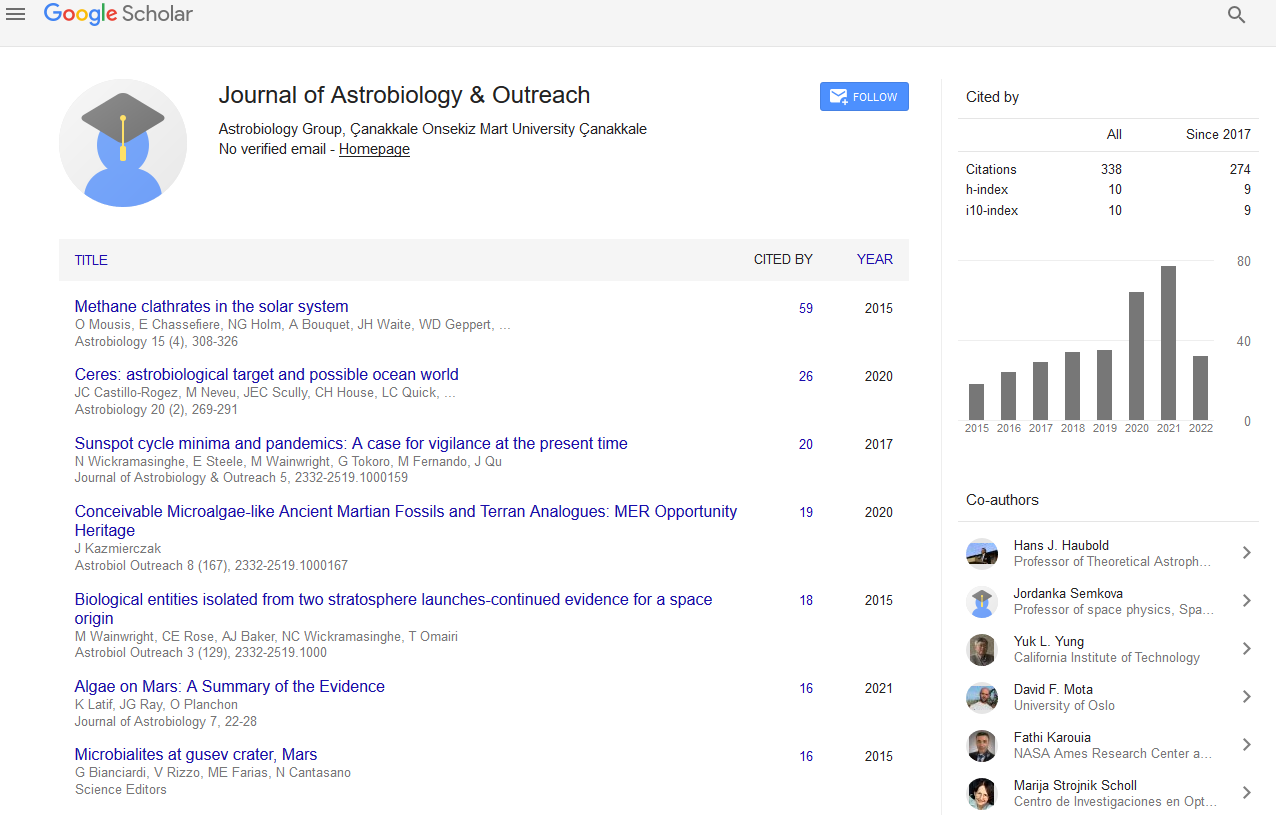Indexed In
- Open J Gate
- Academic Keys
- JournalTOCs
- RefSeek
- Hamdard University
- EBSCO A-Z
- OCLC- WorldCat
- Google Scholar
Useful Links
Share This Page
Journal Flyer

Open Access Journals
- Agri and Aquaculture
- Biochemistry
- Bioinformatics & Systems Biology
- Business & Management
- Chemistry
- Clinical Sciences
- Engineering
- Food & Nutrition
- General Science
- Genetics & Molecular Biology
- Immunology & Microbiology
- Medical Sciences
- Neuroscience & Psychology
- Nursing & Health Care
- Pharmaceutical Sciences
Perspective - (2025) Volume 13, Issue 1
Advancing Tactile Sensing Technologies for Space Robotics
Lara Celeste*Received: 19-Feb-2025, Manuscript No. JAO-25-28779; Editor assigned: 21-Feb-2025, Pre QC No. JAO-25-28779; Reviewed: 07-Mar-2025, QC No. JAO-25-28779; Revised: 14-Mar-2025, Manuscript No. JAO-25-28779; Published: 21-Mar-2025, DOI: 10.35248/2332-2519.25.13.380
Description
The development of tactile sensing technologies for space robotics is a rapidly evolving field that plays an essential role in enhancing the efficiency and safety of autonomous systems in space exploration. As missions to the Moon, Mars and beyond become more complex, tactile sensing systems are integral to ensuring the precise interaction of robots with their environment. These systems provide robots with the ability to feel, detect and respond to physical interactions, an ability that is essential for performing intricate tasks like manipulating objects, assembling structures and conducting repairs in space. The evolution of tactile sensing technologies is transforming how robots operate in microgravity, providing improved dexterity, adaptability and operational reliability.
One of the main challenges in space robotics is the lack of direct human involvement in remote operations, which often involves extreme environmental conditions. Unlike terrestrial environments, space habitats and exploration sites, such as the Moon’s surface or Mars, present unique challenges. These include microgravity, vacuum, radiation and extreme temperature fluctuations. Traditional sensors used for tactile feedback on Earth often fail in these settings, as they are not designed to withstand the harsh conditions of space. Hence, there is a growing demand for more robust and sensitive tactile sensing technologies capable of functioning in these extreme environments.
In space robotics, tactile sensing can be divided into two primary functions: contact sensing and force sensing. Contact sensing involves detecting the physical contact between the robotic end-effector (such as a gripper or manipulator) and an object or surface, while force sensing refers to measuring the force applied by the robotic system during manipulation tasks. Both functions are important for preventing damage to delicate structures or materials in space, as well as for providing valuable feedback to the robot for decision-making.
Over the years, various tactile sensing technologies have emerged, each with distinct advantages and limitations. One of the most widely used technologies is the resistive force sensing method, which involves using resistive materials that change resistance in response to applied pressure. This method is highly suitable for situations where the force or pressure exerted by a robot needs to be measured accurately. However, resistive sensors can be prone to drift in space environments and may require frequent recalibration.
Capacitive sensing is another potential technique that has been explored for space robotics. This method measures changes in capacitance between two conductive surfaces when a force is applied. Capacitive sensors are highly sensitive and capable of detecting small variations in force. They provide the advantage of being less susceptible to environmental changes like temperature fluctuations, making them more suitable for space missions. However, capacitive sensors are more complex and require careful integration into robotic systems to avoid interference from other electronic components.
Piezoelectric sensors, which generate an electrical charge in response to mechanical stress, also show great potential in space robotics. These sensors are extremely sensitive and can detect rapid changes in force, making them ideal for detecting high-frequency vibrations or impacts. They have been used in various space applications, including the robotic arms of spacecraft and rovers. Despite their high sensitivity, piezoelectric sensors require advanced signal processing and power management techniques, which can add complexity to the system.
A more recent innovation in tactile sensing is the use of artificial skin technology, which mimics the sensory capabilities of human skin. Artificial skin is composed of arrays of flexible sensors that can detect various stimuli, including pressure, temperature and vibration. This technology has been adapted for space robotics to create robots with enhanced dexterity and more intuitive manipulation capabilities. The flexibility and scalability of artificial skin make it an attractive option for future space missions, particularly for robots performing complex tasks such as assembly or maintenance of space infrastructure.
In conclusion, tactile sensing technologies are poised to revolutionize space robotics by providing robots with the sensory feedback needed for delicate, precise and adaptive manipulation in space. As these technologies continue to evolve, they will enhance the autonomy, reliability and safety of robotic systems, enabling more ambitious and complex space missions. The future of space exploration depends heavily on the successful integration of tactile sensing, providing unprecedented opportunities for both scientific discovery and technological advancement.
Citation: Celeste L (2025). Advancing Tactile Sensing Technologies for Space Robotics. J Astrobiol Outreach. 13:380.
Copyright: © 2025 Celeste L. This is an open-access article distributed under the terms of the Creative Commons Attribution License, which permits unrestricted use, distribution, and reproduction in any medium, provided the original author and source are credited.

